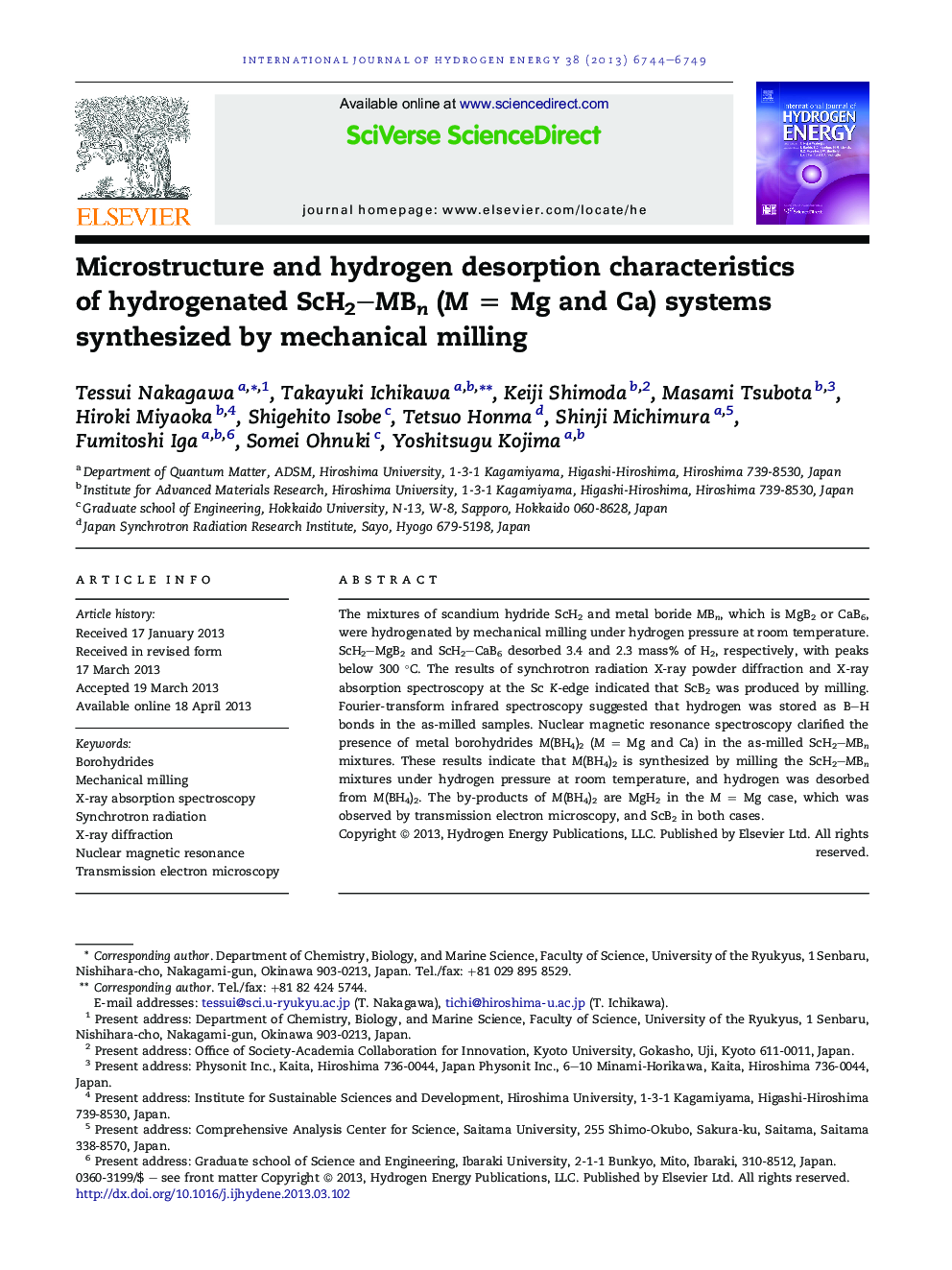| Article ID | Journal | Published Year | Pages | File Type |
|---|---|---|---|---|
| 1281596 | International Journal of Hydrogen Energy | 2013 | 6 Pages |
•Milling under hydrogen pressure accelerates hydrogenation of hydride/boride mixture.•M(BH4)2 (M = Mg and Ca) were observed in the hydrogenated ScH2-MBn (M = Mg and Ca) phases.•Combination of hydride and boride would be an important factor to synthesize the target M(BH4)n.
The mixtures of scandium hydride ScH2 and metal boride MBn, which is MgB2 or CaB6, were hydrogenated by mechanical milling under hydrogen pressure at room temperature. ScH2–MgB2 and ScH2–CaB6 desorbed 3.4 and 2.3 mass% of H2, respectively, with peaks below 300 °C. The results of synchrotron radiation X-ray powder diffraction and X-ray absorption spectroscopy at the Sc K-edge indicated that ScB2 was produced by milling. Fourier-transform infrared spectroscopy suggested that hydrogen was stored as B–H bonds in the as-milled samples. Nuclear magnetic resonance spectroscopy clarified the presence of metal borohydrides M(BH4)2 (M = Mg and Ca) in the as-milled ScH2–MBn mixtures. These results indicate that M(BH4)2 is synthesized by milling the ScH2–MBn mixtures under hydrogen pressure at room temperature, and hydrogen was desorbed from M(BH4)2. The by-products of M(BH4)2 are MgH2 in the M = Mg case, which was observed by transmission electron microscopy, and ScB2 in both cases.
